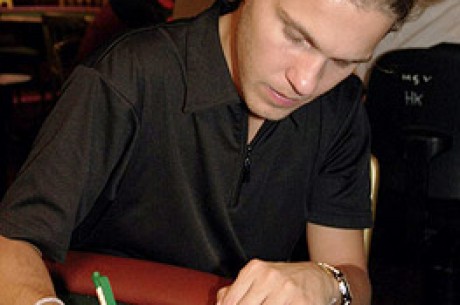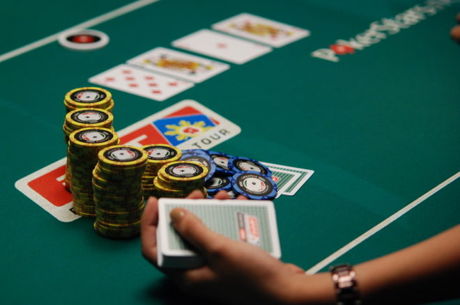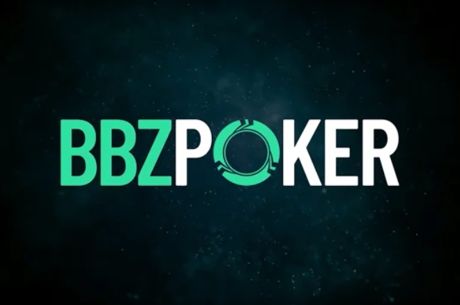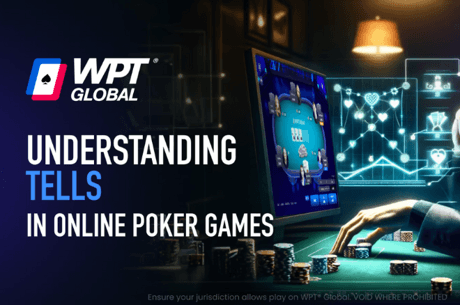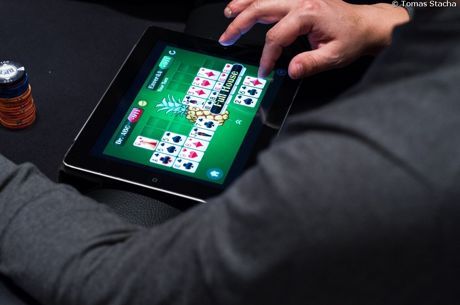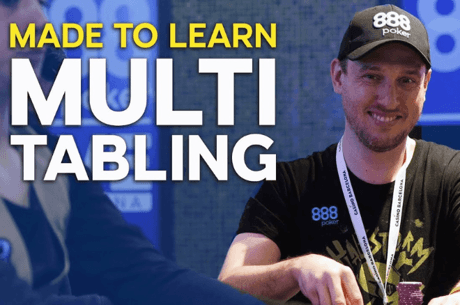Basic Limit Holdem strategy

Now we've gone through the various possibilities open to you as an online poker player, its time to get into some basic strategies so you can think about how to make playing profitable, as well as having fun doing it. As previously suggested, the ideal place to start is with Limit Holdem as it's the most popular game and also the fixed betting structure means you're protected from losing large amounts on one hand.
What level you start playing at depends on what you're financially comfortable putting at risk, but recalling the bankroll suggestions given you should look to have 250 big bets to play with. So at the microstakes level of $0.01/$0.02 you would only need $5, and at $0.5/$1 you would need $250. The latter number might sound large if you're a beginner, but remember this is really just a buffer against the swings you might encounter, and if you read a few books (or articles) and get a good idea of what you're doing you should immediately be better than most of your opposition - and therefore profitable in the long term in the game anyway. In short it's a number calculated to make sure that you don't run out of funds, rather than the amount you are likely to have to risk any time soon.
When you start playing, you'll notice that most of these low limit games can be quite wild and that people often do crazy things ? which is great for making money in the long term but can be a bit of a worry to the beginning player early on. Don't worry though as you're financially equipped to handle any swings, and as you gain confidence and graduate through the limits things will tighten up, you'll be able to spot the bad players and the good ones more easily, and the ride will be smoother. For now though you must simply play tight and disciplined poker, stick to the premium hands and not get unnecessarily drawn into the madness going on around you.
In full ring games of nine or ten players most of the time this means waiting for big hands and raising with them to discourage other players from playing with you. The following hands are mostly raise worthy depending on your position and the action before you:
Early Position - AA - QQ, AK
Mid Position - AA - TT, AK- AJ, KQ
Late Position - AA ? 88, AK- A9, KQ, KJ
You must remember though that if in late position you get a big hand like aces but several players have already called you shouldn't raise, as no-one will fold and you will just make the pot bigger and give drawing hands more reason to stay in. Similarly in mid position, you should be less inclined to raise with the smaller hands listed when a couple of people have already called, and just 'limp' after them to see the flop. Also, if several people have already called in these positions, you have the option of playing multiway hands, i.e. ones that play better against large numbers of players. These are:
Small Pairs ? a hand like 33 doesn't have much chance of winning alone so you can't get into a lot of trouble, but if you call and hit a third 3 then you have a powerhouse hand that is worth betting and raising with unless the threat of a straight or flush emerges.
Suited Connectors ? hands like tcjc have great potential for making flushes and straights and winning big pots, but they don't succeed that often so you need plenty of players in to give you the odds to make playing them worthwhile.
Now you should have some idea of what hands to play and when lets look at what to do on the flop and after. Needless to say, with pairs you are looking to see cards lower than your pair on the flop (unless you hit three of a kind), and with unpaired cards you want to hit them and have the highest pair. So AK likes a flop of A73, but KK doesn't. From here, its fairly simple ? if you think you have the best hand bet or raise, if you don't check or pass, and look at the texture of the board to help you do this. For example, if all hell breaks loose on a board of 789J or four suited cards, and you don't have any of it, even pocket aces are probably garbage whereas if the board cards are unconnected and people play passively your aces stand to be good. With a drawing hand like tcjc you can't expect to make a hand straight away, and so you are hoping for two of your suit on the flop, or a two way straight draw to continue (i.e. a flop with 89, 9Q or QK on it). Remember also that the bets double after the turn, so if you do make a big hand you might wait until then to raise, either to make players with drawing hands behind you fold or get more money in the pot. Alternatively, if you hit a good draw on the flop raising in late position whilst the bets are still small might mean everyone checks to you on the turn and you can take a 'free card'.
The other thing about Limit Holdem to remember is that because playing by the book is so restrictive you can always think accurately about what other players might have. Try to base your opinion on the type of player they are ? its very easy in Limit Holdem to spot those not playing by the book so be consider early whether they are about to pay you off or take your money with something improbable. Similarly, if you can see players who use a careful strategy take note and make predictions of what they have as this is the kind of skill you need to progress up the ranks, and also provides a good basis for learning No Limit where the betting structure means that people can profitably play a wider range of hands against you.


